Sustainable superyacht solutions built on maritime expertise
Drawing on the maritime heritage of Environmental Protection Engineering (EPE), EPE Yachting provides solutions that meet the expectations of superyacht owners today – and will support compliance with stricter environmental regulations in the future, says division director Dimitris Avdelopoulos.…
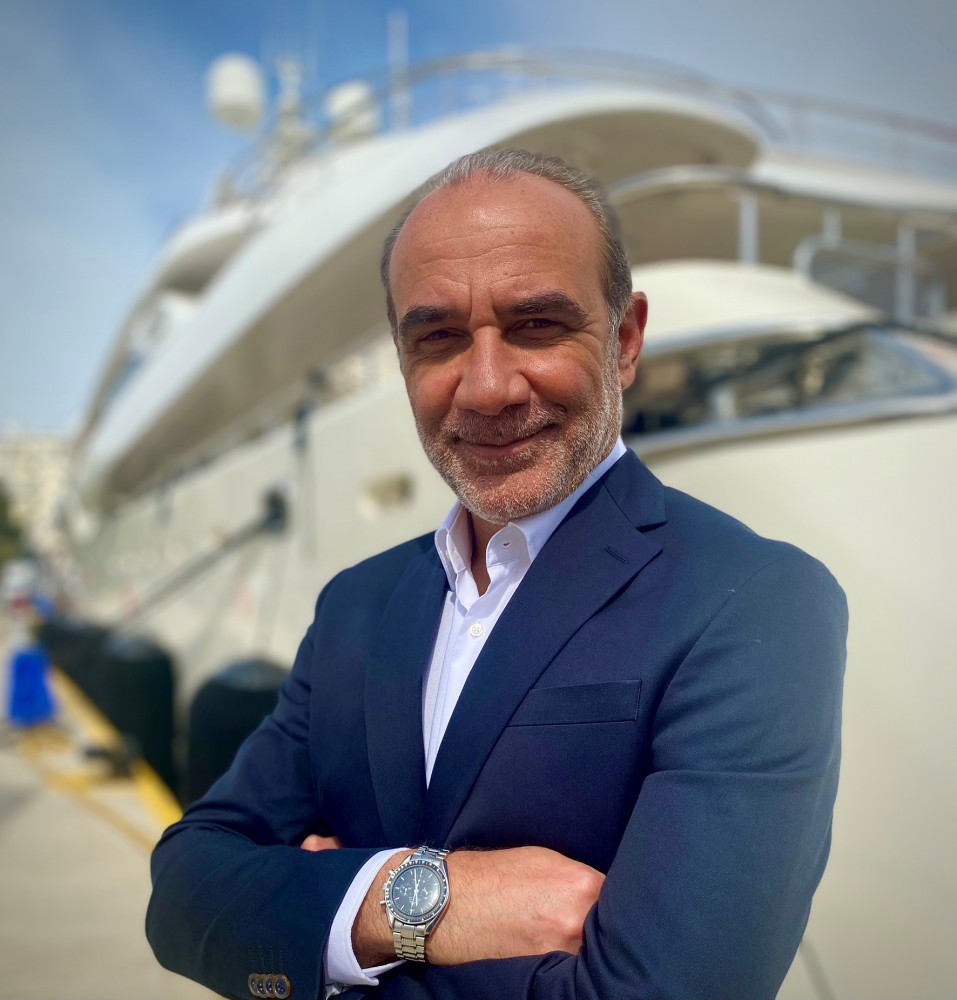
Dimitris Avdelopoulos, division director, EPE Yachting
EPE Yachting draws on over 45 years of experience in protecting the marine environment through future-proof technology as a division of decarbonisation solutions provider EPE. Accordingly, the depth of its maritime sustainability expertise reflects the tougher regulations that apply to commercial shipping and goes beyond that available from competitors in the superyacht space.
With an extensive global service network combining capabilities and infrastructure from across the group, EPE Yachting is also well equipped to support owners with maintenance and spare parts requirements – wherever their yachts are sailing.
“Given the often-narrow window of operation for carrying out services on board a commercial ship, our group of companies has developed a service network that allows engineers to reach vessels, wherever they are stationed, quickly and cost efficiently,” comments Dimitris Avdelopoulos, division director, EPE Yachting. “With yachts, the commercial basis for our services means their speed and efficiency often go above and beyond expectations – meaning minimal hassle for the owner and maximum leisure time for everyone on board.”
The challenge in serving the yachting segment, Avdelopoulos continues, lies in providing solutions that strike a balance between owners’ expectations and regulatory compliance. “Designers clearly want to maximise space on board the yacht for all the comforts and luxuries the owner and their guests expect,” he says. “However, meeting regulations is also essential, and this calls for solutions that support compliance while minimising impact on the guest experience.”
Compact systems for new build and retrofit
Avdelopoulos refers to TRITON FIT, a physiochemical sewage treatment plant that complies with the International Maritime Organization (IMO)’s Resolution MEPC 227(64) and is certified by world-leading classification society DNV. The system’s compact dimensions and accessibility make it the perfect fit for smaller engine rooms, affording yacht designers more freedom to prioritise on-board amenities.
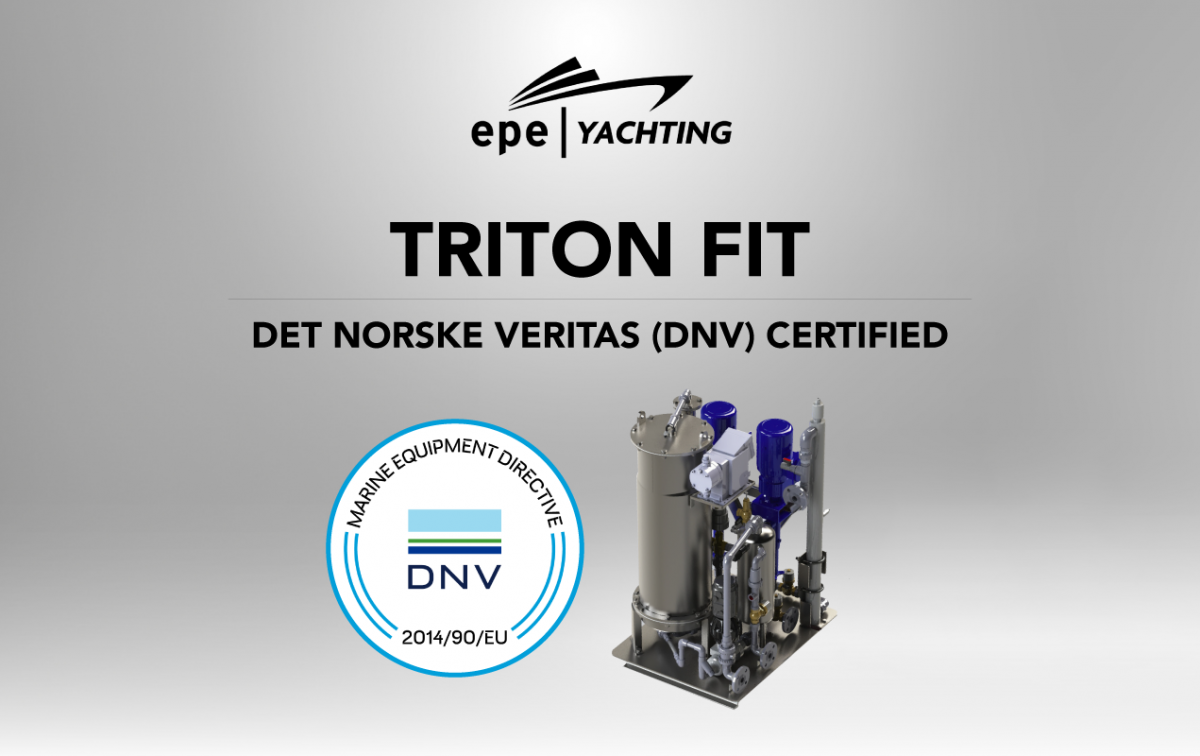
EPE Yachting’s portfolio of sustainable superyacht solutions also covers ballast-water-treatment systems (BWTS) from ERMA FIRST – a leading provider of maritime decarbonisation solutions – and oily water separators (OWS) from RWO, a renowned specialist in marine water management.
Supporting compliance with the ballast-water-management standards of both the IMO and the United States Coast Guard, ERMA FIRST’s oneTANK is a simple, low-cost system with the smallest footprint of any BWTS on the market. RWO’s OWS-COM bilge water treatment system is tested and approved in line with IMO Resolution MEPC 107(49) and is compact, economical, and easy to install and maintain.
To maximise design flexibility, EPE Yachting typically delivers these systems to new builds, but the company also serves the existing market with retrofit installations.
Addressing on-board requirements for fresh water, EPE Yachting also offers a compact reverse-osmosis system, ALIOS, which desalinates sea water to produce fresh water. This can then be filtered, sterilised and mineralised using a third-party drinking water system for existing vessels. Fitting comfortably underneath the galley countertop, this system eliminates the need for pallets of bottled water to be brought aboard the yacht, cutting costs and saving space. By reducing water chilling and waste disposal requirements, it also minimises energy consumption.
EPE Yachting also service wider environmental concerns. Its HERMES system, which is most often installed as a refit solution, uses diesel particle filters to capture soot and harmful particulate matter from exhaust gases. As well as reducing the impact of yacht operations on sensitive coastal environments, HERMES enhances on-board comfort by eliminating unsightly black smoke and unpleasant odours from anchored vessels.
Stricter regulation on the horizon
While EPE Yachting’s solutions help to control the environmental impact of superyachts, Avdelopoulos explains that the market is yet to embrace true decarbonisation to the extent other marine sectors have.
“Yacht owners are not yet facing the same regulatory pressures under which the wider maritime industry is now operating,” he says. “For this reason – and because superyachts have greater design limitations than large commercial vessels – discussions surrounding decarbonisation in the yachting market remain relatively abstract.”
Nevertheless, Avdelopoulos adds that with stricter regulation on the horizon, yacht owners and designers will soon have to address the topic in more concrete terms. “When that time comes, we will be ready to support the market with solutions developed for commercial ships and adapted, through scientific and engineering know-how, to the exacting requirements of superyachts,” he concludes.
Profile links
Environmental Protection Engineering
NEW: Sign up for SuperyachtNewsweek!
Get the latest weekly news, in-depth reports, intelligence, and strategic insights, delivered directly from The Superyacht Group's editors and market analysts.
Stay at the forefront of the superyacht industry with SuperyachtNewsweek
Click here to become part of The Superyacht Group community, and join us in our mission to make this industry accessible to all, and prosperous for the long-term. We are offering access to the superyacht industry’s most comprehensive and longstanding archive of business-critical information, as well as a comprehensive, real-time superyacht fleet database, for just £10 per month, because we are One Industry with One Mission. Sign up here.
Related news
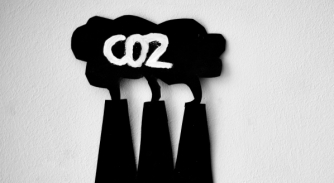
Scope 3 emissions – their challenges and potential solutions
As Scope 3 becomes critical to reporting and disclosure regulations, businesses must understand and manage these emissions to future-proof their business
Business
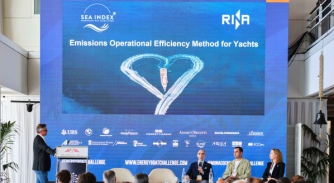
New CO2 emissions tracking tool
Sea Index® and RINA are collaborating on the next addition to their methodology, focusing on the life-cycle impact of fuels, from conventional to biofuels
Crew

Is carbon offsetting all it’s cracked up to be?
Our Sustainability Editor explores a new direct air-capture technology and puts the current state of the carbon offsetting industry under the microscope
Crew
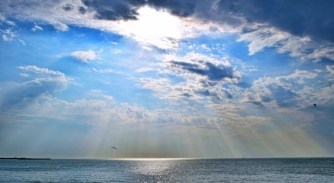
New EU directive to increase corporate responsibility
The latest in corporate-justice-related European directives has been agreed, affecting business operations and their negative social and environmental impacts
Business
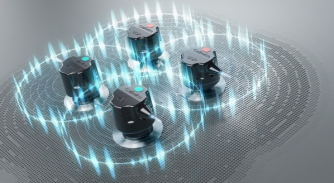
Ultrasonic biofouling protection
Dr Sasha Heriot, product development business manager at Cathelco, outlines the environmental significance of biofouling management in superyacht operations
Technology
Related news
New CO2 emissions tracking tool
8 months ago
Is carbon offsetting all it’s cracked up to be?
10 months ago
New EU directive to increase corporate responsibility
11 months ago
Ultrasonic biofouling protection
11 months ago
NEW: Sign up for
SuperyachtNewsweek!
Get the latest weekly news, in-depth reports, intelligence, and strategic insights, delivered directly from The Superyacht Group's editors and market analysts.
Stay at the forefront of the superyacht industry with SuperyachtNewsweek



